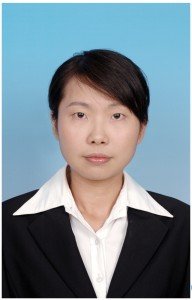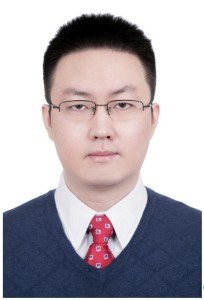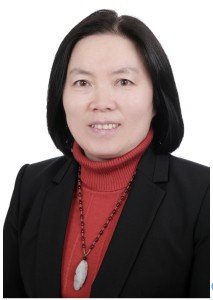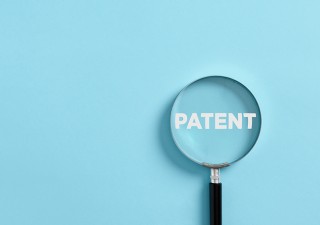During patent enforcement work, patentees often encounter such challenges as invalidation requests against their patents. In patent invalidation procedure, a patentee may need to amend the claims to adjust their scope or avoid a risk of invalidation. It is evident that amendments to claims during the invalidation procedure must achieve an appropriate adjustment of scope that is more conducive to patent protection while also ensuring that the amendments can be smoothly accepted, thereby avoiding the risk of invalidation of relevant claims due to no amendment or improper amendment. Moreover, in later administrative litigation against decisions of the invalidation proceeding, claims cannot be amended. Therefore, it is crucial for patentees to give careful consideration to how to amend claims when necessary during the invalidation procedure.
Herein the authors first summarize the requirements for amending claims during patent invalidation procedures and then further discuss by sharing some typical cases from the Supreme People’s Court (SPC).
Requirements for amendments to claims in invalidation procedures
Basic requirements for amendments to patent documents
China’s patent system imposes stringent requirements on the amendments to patent documents. During the patent application process, any amendment to the application documents must not exceed the scope recorded in the original specification (including drawings) and the claims. For design patent applications, amendments to the application documents must not exceed the scope expressed in the original drawings or photographs.
However, the requirements for amendments in the invalidation procedure are even stricter. For invention patents and utility model patents, amendments to the claims must not broaden the protection scope of the original patent, and the specification and drawings cannot be amended. As for design patent documents, no amendment is allowed.
Detailed requirements for amendments to claims in invalidation procedures
Amendments to claims are essentially limited to those directed to the reasons for invalidation or defects pointed out by the panel, and the amendments must meet four requirements: (i) no amendment can be made on the subject matter; (ii) the scope must not be broadened compared with that of the granted claims; (iii) the amendments must not exceed the scope recorded in the original specification and claims; and (iv) technical features not included in the granted claims generally must not be added.
Furthermore, the Guidelines for Patent Examination also mention that the amendment manners are “generally limited” to deleting claims, deleting technical solutions, further limiting claims, and correcting obvious errors.
Deleting claims may involve removing one or more claims, either independent or dependent claims, removing one or more technical solutions from two or more technical solutions parallelly listed in a claim. Limiting claims may involve incorporating one or more technical features recorded in other claims into a claim to narrow its scope.
Case study on amendments to claims in invalidation procedures
Regarding such requirements for amending claims in invalidation procedures, several common issues will be discussed with court cases to clear some doubts or controversies in practice.
Whether the amendment manners listed in the Guidelines are exhaustive
The amendments to patent claims should not be understood as being exhaustively limited to the above “generally limited” manners. The SPC confirmed in a precedent that the amendment manners listed in the Guidelines are not the sole discretionary basis for judging whether an amendment manner complies with the law.
In the patent invalidation administrative dispute case (2020) Zui Gao Fa Zhi Xing Zhong No. 246, the patentee, without changing the additional technical features of Claims 2, 3, and 4, altered the dependency of dependent Claim 4 from “depending on Claim 3” to “depending on Claim 2” during the invalidation procedure, and the China National Intellectual Property Administration (CNIPA) accepted this amendment.
However, the court of first instance did not accept this amendment, holding that the amended Claim 4 essentially removed the additional technical feature limitation from the original Claim 3, leading to an expansion of the scope.
The SPC did not endorse this holding, noting that: with regard to newly emerged amendment manners in practice, the judiciary, administrative departments and the public should maintain an appropriate level of tolerance. There should be sufficient prudence and restraint in adopting any new legal principles that go beyond the essence of amendments to directly restrict or prohibit specific amendment manners.
The SPC held that the Guidelines enumerate several amendment manners in the invalidation procedure, but the enumerative expression merely represents the common amendment manners summarized by administrative departments based on invalidation requests and examination practices. While such enumeration helps coordinate the behavioral patterns of patentees, invalidation petitioners and administrative departments and enhances the efficiency of their interactions, the provisions themselves are not the sole discretionary basis for determining the legality of an amendment manner. Furthermore, the phrase “generally limited” in the Guidelines should not be interpreted as absolutely excluding other amendment manners.
Comparison basis in determining whether the scope is expanded
Whether claim amendments expand the scope of the original patent should be judged by comparing the amended independent claim with the independent claim that provides the broadest scope in the original patent, rather than with the dependent claims that offer a narrower scope. This judicial principle and its legal rationale have been confirmed by the SPC in relevant precedents.
In the patent invalidation administrative dispute case (2019) Zhi Xing Zhong No. 19, the patentee incorporated the additional technical features of dependent Claims 2 and 20 into Claim 1 during the invalidation procedure.
The CNIPA did not accept such amendment, reasoning that since the granted Claim 20 depends on Claim 19, which in turn depends on Claim 18, and when the granted Claim 18 depends on Claim 2 that is dependent on Claim 1, the technical solution of Claim 20 should encompass all technical features from Claims 1, 2, 18, 19 and 20, but the amended Claim 1 did not include the features of the granted Claims 18 and 19, thus failing to comply with relevant regulations.
The court of first instance concurred with CNIPA’s position and rejected the amendment, holding that the amended claim 1 did not limit the specific content range of the elements defined in Claim 19, thereby broadening the scope of the original patent.
The SPC held that the amendment should be accepted and pointed out that when the amendment to claims involves incorporating all or part of the additional technical features of a dependent claim into its independent claim, the determination of whether the amended independent claim expands the scope of the original patent should be based on the scope of the independent claim of the original patent that is the subject of the amendment, rather than the scope of the original claim to which the additional technical features belong.
The SPC provided the following legal considerations for accepting the amendment:
After a patent is granted, it serves as a public notice to the general public, whose reliance interests are typically established on the independent claim with the broadest scope. Based on this, the public predicts and evaluates the legality of their own actions. Incorporating the additional technical features of a dependent claim into an independent claim further limits the independent claim, rather than expands its scope. On the contrary, it narrows the scope of the original independent claim. On this basis, it neither undermines the public notice effect of the original patent nor harms the reliance interests of the public arising from the original patent.
Responsiveness requirements on claim amendments in patent invalidation procedures
In judicial precedents, the SPC supported the notion that claim amendments in invalidation procedures should be limited to addressing the grounds for invalidation, and further held that amendments that aim to optimize the drafting of claims under the guise of overcoming defects pointed out in the invalidation grounds, i.e., non-responsive amendments, may not be accepted as they do not align with the institutional positioning of patent confirmation proceedings.
In the patent invalidation administrative dispute case (2021) Zui Gao Fa Zhi Xing Zhong No. 556, the patentee formulated multiple new independent claims during the invalidation procedure:
- The amended Claim 1 incorporated additional technical features from dependent Claims 2, 4, 6, and 7;
- The amended Claim 4 incorporated additional technical features from dependent Claim 3 (which referred to the original Claim 1) based on the original Claim 1;
- The amended Claim 5 incorporated additional technical features from dependent Claims 11, 12, and 14 based on the original Claim 9;
- The amended Claim 7 incorporated additional technical features from dependent Claim 13 (which referred to the original Claim 9) based on the original Claim 9;
- The amended Claim 11 was derived from the original independent Claim 15 by changing from referring to “Claim 1 or 9” to referring to “Claim 1, 4, 5 or 7” and further incorporated additional technical features from dependent Claims 16, 17, and 20.
The CNIPA held that the amended Claims 1 and 5 complied with the relevant regulations; however, it rejected the amended Claims 4, 7, and 11 on the grounds that after being further limited, the original Claim 1 had become a new Claim 1 with increased technical features and a narrowed scope, rendering the original Claim 1 non-existent, and therefore, the amendment of the new Claim 4 was not acceptable. The amended Claims 7 and 11 had the same defects and were likewise rejected.
The court of first instance affirmed the above conclusions of the CNIPA and further opined that: allowing the co-existence of the amended Claims 1 and 4 would be equivalent to allowing a single independent claim to transform into multiple independent claims, thereby expanding the scope of the original claims, which does not comply with relevant regulations; for the same reason, the amended Claims 7 and 11 should also not be accepted.
The SPC expressed a different opinion, holding that the amended Claims 4 and 7 should be accepted, but Claim 11 should not. The reasons were: (i) the amended Claims 4 and 7 are essentially the original Claims 3 and 13, respectively, and are not new claims formed through amendments. They are naturally the basis for examination, and there is no issue of unacceptability due to the so-called amendments; (ii) since claim amendments in patent confirmation proceedings should be limited to responding to the grounds for invalidation, the CNIPA's handling of the amended Claim 11 was not inappropriate.
The SPC further ruled that patent confirmation proceedings are to verify the legitimacy of a granted patent based on grounds for invalidation. It is neither a comprehensive review process for the legitimacy of the grant nor an optimization process for claim drafting. Therefore, claims amendments in patent confirmation proceedings should generally be limited to responding to the grounds for invalidation (either presented by the invalidation petitioner or introduced by the CNIPA).
Once non-responsive amendments are deemed acceptable, the patent confirmation proceedings will inevitably be distorted into a tool for obtaining additional opportunities to optimize claim drafting after grant. This would not only be detrimental to improving quality from the initial drafting and prosecution, but also hinder the true function of the invalidation procedure. It could lead to an imbalance in public interests. Therefore, even if non-responsive amendments do not go beyond the scope of information disclosed in the original specification and claims and not expand the scope of the original patent, and fall within the permissible amendment manners in the Guidelines, they may still be rejected.
It is noteworthy that in patent confirmation proceedings, the unamended claims are naturally the basis for examination and do not constitute an object of evaluation for statutory or other restrictions on claim amendments. Therefore, when confirming the basis for examination, whether the relevant claims are the original claims or new claims formed through amendments should first be clarified. Whether relevant claims are amended should undergo substantive examination, and the fundamental basis should be whether the scope of the claims before and after the amendment has undergone substantial changes.
Amendment manner of ‘further limiting’ in patent invalidation procedures
Regarding whether an amendment should be considered as “further limiting” a claim, the SPC gave the following guidance in the aforementioned Case 3: The CNIPA can only examine: (1) whether the amended claim fully encompasses all technical features of the original claim; (2) whether the amended claim includes any new technical features compared to the original claim; and (3) whether all newly added technical features originate from other original claims.
Should amendments involving dependent claims be accepted?
In practice, amendments to claims should not be limited to the manners specified in the Guidelines, and other amendment manners should not be excluded, which had been supported by the SPC in some cases.
In the patent invalidation administrative dispute (2021) Zui Gao Fa Zhi Xing Zhong No. 548, the patentee combined the technical features of dependent claims into new dependent claims without amending independent Claim 1.
The CNIPA rejected such amendments, holding that the provision of “further limiting claims” clearly states that “limiting” involves adding one or more technical features recorded in other claims to a claim, and the result of “limiting” is to “narrow the scope”. Since the patentee did not limit the original independent claim, which remained unchanged after the amendments, such amendments did not reflect the requirement of “narrowing the scope”. Therefore, this amendment manner did not constitute “further limiting claims”.
Both the court of first instance and the SPC did not agree with the CNIPA, holding that such amendments should be accepted. In this case, although the patentee made amendments to dependent claims, they did not amend the independent Claim 1, the broadest scope, thereby not expanding the scope of the patent. The amendments did not broaden the scope of the patent or go beyond the scope of the original specification and claims. The amendments should be accepted.
The SPC pointed out that “further limiting claims” do not explicitly require that the limitation must be imposed on independent claims. Though the Guidelines list general amendment manners, the possibility of other amendment manners should not be completely excluded.
In invalidation proceedings, the amendment manner should focus on achieving the legislative purpose of ensuring that amendments do not go beyond the scope of the original specification and claims and do not broaden the scope of the patent, while balancing the efficiency of administrative examination and the fair protection of the patentee's contributions. It is not appropriate to impose overly strict restrictions on specific amendment manners, as this would make the restrictions on amendment manners purely a punishment for the patentee’s improper drafting of claims.
Summary and suggestion
As can be seen from the above amendment requirements and cases, requirements for amending claims in invalidation procedures are still strict. Only the claims of an invention or utility model patent can be amended. The amendments cannot go beyond the scope of disclosure and must not broaden the scope of the original patent, which means they must not broaden the scope of the independent claims of the original patent. The amendments should generally be limited to responding to the grounds for invalidation or defects pointed out by the panel, and non-responsive amendments may not be accepted. The general amendment manners listed in the Guidelines do not completely exclude other possible amendment manners. In invalidation procedures, under the premise of meeting the two standards of not going beyond the scope disclosed in the original specification and claims and not broadening the scope of the original patent, patentees can still attempt to adopt other manners to amend the claims, so as to protect their rights and interests.
About the authors
Xiao Ning works as a patent attorney and a group leader at AFD China. She passed the National Judicial Examination in 2007 and joined AFD China in 2008. She has extensive experience in all phases of patent prosecution and enforcement. Her primary focus is on patent invalidation, litigation, arbitration, and administrative resolutions. Other than that, she has also prepared and prosecuted numerous patent applications with a broad spectrum of technical fields including telecommunications, signal processing, electro-mechanical devices, ecommerce, consumer products, and medical devices.
Mingzhao Yang is president of AFD China. He leads the firm’s strategic management and operation teams. He focuses his practice on intellectual property matters including IP prosecution, post-grant proceedings, dispute solutions, litigation, and counseling. Yang is a patent attorney registered before the CNIPA and patent litigation attorney registered before the Supreme People’s Court of China. He obtained his Bachelor’s of Engineering degree from Beijing University of Technology and then received systematic research and development training in a research and development company. Yang also worked in firms respectively as an IP legal assistant, patent engineer, department head, and assistant general director, while and after receiving trainings on IPR-related laws and patent and trademark practice at the China IP Training Center and the All-China Patent Attorneys Association, legal training at several Legal Training Centers and copyright training at the China Copyright Protection Center.
Xia Zheng is founder of AFD China, and a patent attorney, trademark attorney and attorney at law. She started her career in IP practice in 1987 and practices in many areas of field, especially IP strategy, prosecution, post-grant proceedings and IP-related litigation. Zheng participates actively in the industry and is recommended as leading practitioner by numerous publications, including MIP’s IP Stars. She was named a National IP Talent in 2016, Beijing Outstanding Patent Attorney of 2014 and an Excellent Legal Professional of Haidian in 2012.











